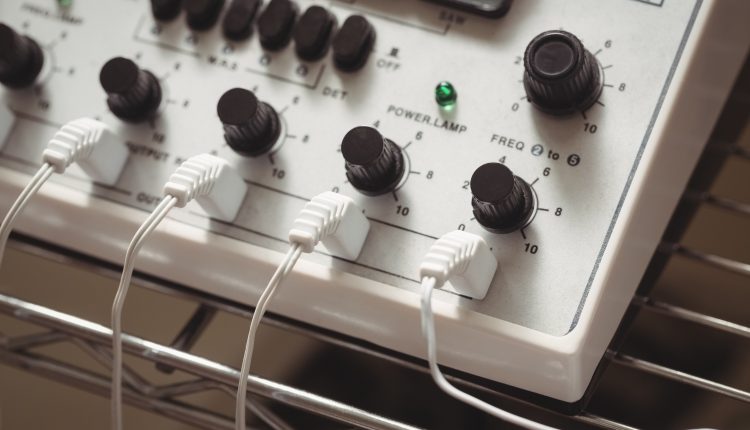Exploring the Differences Between TENS Units and Electric Stimulation for Pain Relief and Therapy

Pain, whether chronic or acute, can have a profound impact on an individual’s quality of life. For centuries, people have sought various methods to alleviate pain and discomfort, ranging from traditional massage therapy to modern technological advancements like TENS units and electrical stimulation (E-stim). In this comprehensive article, we delve deep into the distinctions between TENS units and electric stimulation, exploring their mechanisms, applications, and effectiveness in pain management and therapeutic relief.
Understanding TENS Units
What is TENS?
TENS, or Transcutaneous Electrical Nerve Stimulation, is a non-invasive therapy that employs electrical impulses to alleviate pain. TENS units are portable, battery-operated devices designed to send controlled, low-voltage electrical currents to specific areas of the body through adhesive electrodes placed on the skin.
How TENS Works
TENS units work on the principle of “gate control theory.” This theory suggests that the electrical stimulation from the TENS device can interfere with and block pain signals from reaching the brain. Essentially, it “closes the gate” on pain perception, providing relief to patients.
Applications of TENS
TENS units are widely used for managing various types of pain, including:
Chronic Pain: TENS therapy is often employed for chronic pain conditions like arthritis, fibromyalgia, and lower back pain.
Acute Pain: TENS can provide relief from acute conditions such as post-surgery pain or injury-related discomfort.
Muscle Pain: TENS is effective in reducing muscle pain and promoting relaxation.
Neck and Shoulder Pain: It is commonly used for neck and shoulder pain resulting from tension or strain.
Period Pain: Many women find relief from menstrual cramps through TENS therapy.
Pregnancy: Pregnant women with back pain or discomfort may benefit from TENS during labor.
Understanding Electric Stimulation (E-Stim)
What is Electric Stimulation?
Electric stimulation, often referred to as E-stim, is a broader term encompassing various electrical stimulation therapies used in the field of physical therapy and rehabilitation. While TENS is a form of electrical stimulation, E-stim includes a wider range of techniques and devices.
How E-Stim Works
E-stim works by delivering controlled electrical impulses directly to muscles or nerves. This stimulation can cause muscle contractions, which can be beneficial for therapeutic purposes such as muscle strengthening or re-education. E-stim can also target nerves to alleviate pain or promote healing in damaged tissues.
Applications of E-Stim
E-stim is utilized in diverse medical and therapeutic contexts, including:
Neuromuscular Electrical Stimulation (NMES): NMES is commonly used for muscle strengthening and retraining after injuries or surgeries.
Electrical Muscle Stimulation (EMS): EMS focuses on muscle contraction and is often used for physical therapy and sports training.
Pulse Massagers: These portable devices provide electrical stimulation to alleviate muscle soreness and tension.
Cranial Electrotherapy Stimulation (CES): CES devices are designed to treat conditions like anxiety, insomnia, and depression by affecting brainwave patterns.
Pulsed Electromagnetic Field Therapy (PEMF): PEMF therapy uses electromagnetic fields to promote healing and pain relief in various health conditions.
Key Differences Between TENS Units and E-Stim
Purpose and Mechanism:
TENS units primarily target pain management by interfering with pain signals.
E-stim serves multiple purposes, including muscle strengthening, rehabilitation, and pain relief by inducing muscle contractions or directly stimulating nerves.
Muscle Contraction:
TENS units are not designed to cause muscle contractions.
E-stim devices, such as NMES and EMS, aim to induce controlled muscle contractions for therapeutic purposes.
Applications:
TENS is primarily used for pain relief, making it suitable for a wide range of conditions.
E-stim has broader applications, including muscle rehabilitation, muscle strengthening, and neurological conditions.
Devices and Settings:
TENS units are typically user-friendly, portable devices with adjustable settings for intensity and frequency.
E-stim devices can vary widely in complexity, from simple pulse massagers to advanced medical-grade equipment used in clinics.
Pain vs. Muscle Therapy:
TENS units excel at managing pain, making them a go-to choice for individuals seeking relief from various pain conditions.
E-stim, with its focus on muscle therapy, is favored in situations requiring muscle strengthening or re-education.
Health Conditions:
TENS units are suitable for individuals with chronic pain, acute pain, or specific pain-related issues.
E-stim may be recommended for patients undergoing physical therapy, recovering from injuries, or dealing with muscle-related health conditions.
Effectiveness and Considerations
The effectiveness of both TENS units and E-stim largely depends on the individual, the specific health condition, and the treatment goals. Some people may respond better to one therapy over the other. It’s essential to consult a medical professional or therapist to determine the most appropriate treatment for your unique situation.
Conclusion
TENS units and electric stimulation (E-stim) are valuable tools in the realm of pain management and therapy. While TENS units excel at pain relief by blocking pain signals, E-stim encompasses a wider range of applications, including muscle therapy and rehabilitation. Both therapies have their distinct purposes and mechanisms, making them valuable assets in improving the health and well-being of people affected by pain and muscle-related issues. Understanding the differences between these therapies can empower individuals and medical professionals to make informed decisions regarding treatment options. Always consult with a healthcare provider or therapist for guidance on the most suitable approach for your specific condition.


Comments are closed.